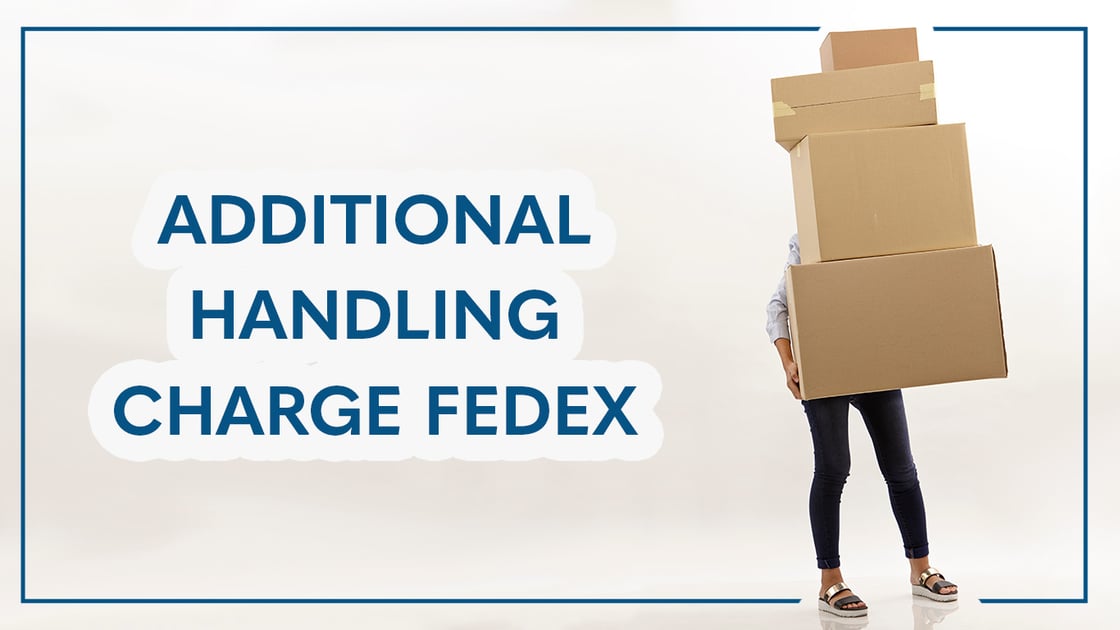Additional Handling Charge FedEx
April 21, 2022 •Deyman Doolittle

FedEx charges additional, special handling fees for certain types of packages. How are these fees calculated? Are they always fair? And how can you avoid overpaying FedEx? Individuals are often concerned with these questions, and businesses shipping in bulk even more so.
A properly-conducted parcel invoice audit reveals many areas businesses overpay on their parcel shipping. This may include paying too many FedEx surcharges for additional handling. Sometimes FedEx cuts business clients a deal in one area, while another fee is making up the difference.
In this blog, we’re breaking down the FedEx additional handling surcharge in 2022 and revealing easy ways companies can achieve cost-savings without compromising on efficiency and client service.
What Is an Additional Handling Charge?
Additional handling charges are fees paid by a shipper, in part to ensure a package is handled with care and arrives at the destination intact. Such fees are levied by UPS, Fedex, and the US Postal Service, but differ based on each carrier. Here are some of the reasons you might pay an additional handling surcharge with FedEx specifically:
- Very wide or long parcel
- Heavy parcel
- Items without traditional packaging
- Residential delivery
- Non-stackable parcel or freight
- Address correction required
FedEx additional handling charges apply to both domestic FedEx Ground and FedEx Express shipments, as well as freight services and international shipping. The charge is determined by both the type of shipping you choose as well as the shipping zone. Each zip code in the United States is part of one of seven zones. Naturally, shipping costs increase when zones are further apart or when they are far from FedEx warehouses. You can use the FedEx zone calculator to predict additional fees based on the zip code you are shipping from and the parcel’s final destination.
Does FedEx Charge By Weight or Size?
Reviewing FedEx’s additional handling charges might have you wondering if the basic shipping rate is based on parcel weight or parcel size. The answer is—whichever is greater.
When FedEx picks up or accepts your package, they check both its actual weight and its dimensional weight. The actual weight is how much the parcel weighs, while dimensional weight is related to its size.
Why does the distinction matter? Let’s consider an extreme example—imagine you wanted to ship a feather inside a refrigerator box. If FedEx charged you by the weight of the package, this would be very affordable indeed! But FedEx would have a large box to move, taking up space which could be occupied by other parcels. That’s why they would charge you to ship by dimensional weight instead.
How Does FedEx Calculate Dimensional Weight (DIM)?
FedEx measures the package in inches and uses the basic formula for calculating volume: length x width x height. This gives the cubic inches of the parcel, aka how much space it takes up, which is then divided by 139, FedEx’s dimensional factor.

Each carrier sets their own dimensional factor, which is what they have determined as the number of cubic inches per pound. Private carriers can change the DIM client-by-client, to give more competitive rates to businesses who pay for daily shipments or ship in high volumes.
Say our refrigerator box was 24” long, 23” wide, and 68” tall. To find dimensional volume, you would calculate 24 x 23 x 68. Divide the total, 37,536 cubic inches by 139, because FedEx assumes every 139 cubic inches is equal to one pound of weight.
This final calculation lets you know how many “pounds” the refrigerator box represents. The answer reveals you would be charged to ship an approximately 270 lb parcel—even though the actual weight of a box with a single feather inside is far less.
FedEx charges by both weight and dimensional weight to encourage shippers to "right-size" their packaging. Don’t want to do the math? Use the FedEx dimensional weight calculator.
What are FedEx Special Handling Charges?
FedEx special handling charges apply to items such as:
- Parcels that are more than 48” along their longest side, or more than 30” along their second-largest side.
- Domestic parcels with actual weight more than 50 lb or international parcels that weigh more than 70lb.
- Items with special packaging such as those which are not fully enclosed in a container, whose packaging is not made of cardboard, or which are shaped like cylinders.
These are just some examples of parcels that carry a FedEx special handling charge. Review the full list of parcel criteria that lead to additional handling charges in this excerpt from the FedEx service guide 2022.
Generally, you can expect to pay between $15-30 for each domestic special handling charge, including shipments to Alaska, Hawaii, and Puerto Rico. For freight shipments or international shipments, costs increase. These can include fees for clearances by entities like the FDA, customs fees, currency conversions, and more. The FedEx service guide PDF (linked above) contains a breakdown of all the FedEx fees and surcharges.
Get a ShipSigma FedEx Shipping Savings Guarantee
ShipSigma has fully automated the parcel invoice audit process, including helping customers pinpoint where additional handling charges are leading to unnecessary overages. Our proprietary AI-driven technology lets our business partners bypass the manual analysis and get straight to the insights. We analyze live market data, combined with your own historical data, to arm you with power for a carrier contract negotiation that saves you money. The average outcome is 25% savings on business shipping costs—and for you, it could be more.
Try our platform for free and unlock the insights that will have your business saving on shipping costs within a matter of weeks.

